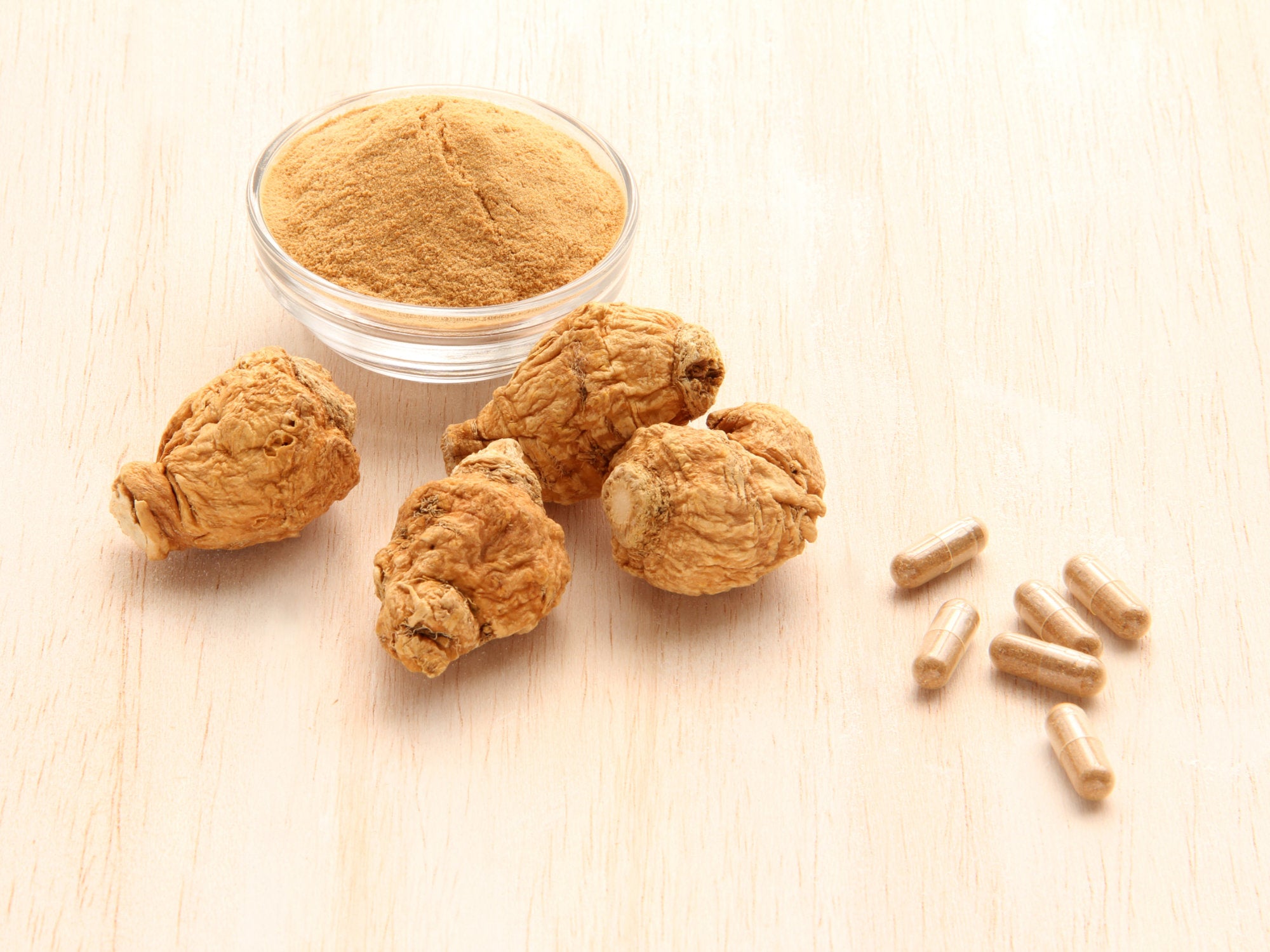
Peruvian Maca, better in capsules or powder?
Peruvian Maca is an extraordinary plant with important tonic-adaptogenic properties.
The edible part is its root, rich in nutrients important for the health of the body, for this reason it is considered a Superfoods .
Peruvian maca root can be eaten cooked or boiled. It is often sun dried using traditional methods.
From dried maca a powder is obtained that has a very particular and pungent flavour, sweetish, slightly malty , it oscillates between bitter and spicy, and can be used as a spice to enhance both sweet and savoury recipes.
But if you don't like its particular and strong taste, it can be easily hidden by mixing the maca powder with other ingredients or it can be taken in capsule form.
Let's recap together what Peruvian maca is and how it is best to take it in capsules or powder.
What is Maca?
The Maca It is a plant very similar to the turnip, which comes from a plant of the Brassicaceae family, its botanical name is Lepidium meyenii and originates in the Andes.
This small annual herbaceous plant is typical of the Peruvian and Bolivian highlands.
The maca plant is considered perennial, due to the formation of its roots, a rounded tuber with a diameter of approximately 8 cm and a length of 14 cm, whose colour varies from yellow to red.
From its root, which is edible, a powder is obtained which is used and appreciated for its beneficial properties.
“Peruvian ginseng ”
Maca contains important nutrients and is increasingly appreciated for its tonic-adaptogenic capacity.
Thanks to its composition, maca is effective as an adaptogenic remedy to improve the body's nonspecific resistance in response to external stress stimuli, both physical and psychological.
In fact, maca root is able to increase our body's ability to adapt to stressors.
Furthermore, maca is the subject of numerous studies for its effects on both male and female fertility.
It would be able to reduce the symptoms of menopause in women and, furthermore, it would act as a natural aphrodisiac, increasing sexual desire.
In the countries where it is grown, in Peru and Bolivia, it is also widely used for “altitude sickness” because it is said to be able to increase the oxygen content in the blood, alleviating the symptoms related to altitude.
How is Maca powder obtained?
Maca root can be processed in three ways:
- Traditional process: The roots are harvested between May and July and then left to dry in the sun for up to two weeks. They can then be boiled in water or milk until they are soft enough to eat.
- Pulverization process: This process occurs after drying in the sun. The roots are cleaned and ground. The maca powder is then mixed with drinks or other foods for consumption. Raw maca is difficult to digest due to the presence of starch.
- Gelatinization process: Since the 1990s, gelatinized Maca has been produced. The sun-dried roots are processed to remove all the starch content. This process allows the Maca powder to be more easily digestible. The powder can then be added to drinks or other foods for consumption.
Gelatinized Maca Powder It has numerous advantages, in addition to being easier to digest, it is more concentrated and more soluble.
Finally, this process also has a hygienic value and keeps all the nutritional properties of the food intact.
What is the difference between maca powder and maca capsules?
There is no no difference between maca in capsules and powder.
The production process is the same and begins with the collection of this root and its subsequent processing until a yellow/beige powder is obtained.
The difference between the powder and the capsules is the added step of filling the cellulose capsules with the same gelatinized Maca powder.
So, the only difference is in the mode of intake and dosage.
Capsules are convenient to use as a supplement, powder is more convenient to use as a spice in recipes.
What is the best way to take maca: capsules or powder?
To understand whether it is better to buy maca in capsules or powder form, it is important to know how to best use this product.
Organic Maca Powder It can be dissolved in drinks, fruit shakes or smoothies.
It pairs perfectly with fruit juices, chocolate, yogurt, milk and much more.
Generally, the recommended daily dose is approximately 1 teaspoon of Peruvian maca powder.
It can be added as a spice to savory recipes: to season vegetables, roasts and potatoes, in broths or soups, or it can be used in bread dough and homemade pasta.
Finally, it can be used in the preparation of sweet recipes, such as biscuits and cakes.
Organic maca in capsules , on the other hand, is an excellent way to take this precious food in case you don't like its strong and particular taste.
They can be conveniently taken 3 capsules of maca up to twice a day.
Contraindications and side effects
Although maca is considered a safe food, it is best to start with small amounts and gradually increase, giving the body time to get used to it.
Sometimes taking maca powder can cause unwanted effects especially in cases where you exceed the quantities or use it for long periods.
In fact, Peruvian maca should not be consumed for a prolonged period, but it would be preferable to take a week off for every month of constant intake.
In case of pathologies, pregnancy or breastfeeding it is always necessary to consult a doctor before taking maca.
Some studies on maca and its benefits:
- https://www.ncbi.nlm.nih.gov/pmc/articles/PMC3614604/
- https://pubmed.ncbi.nlm.nih.gov/18784609/
- https://pubmed.ncbi.nlm.nih.gov/12472620/
Maca Fritters
Preparation time: ~15 min
Ingredients
- 2 eggs
- 2 small bananas
- 1 teaspoon of NaturaleBio maca powder
- 1 teaspoon lucuma powder
- 1-2 teaspoons of NaturalBio coconut oil
Preparation
Blend eggs, bananas and maca powder in a blender until smooth. Add 1 tablespoon of coconut oil to a skillet over low heat. Then add the desired amount of pancake batter. Cook each side for about 2 minutes (Add more coconut oil if needed). Finish with fresh fruit, maple syrup or NaturaleBio Manuka honey.


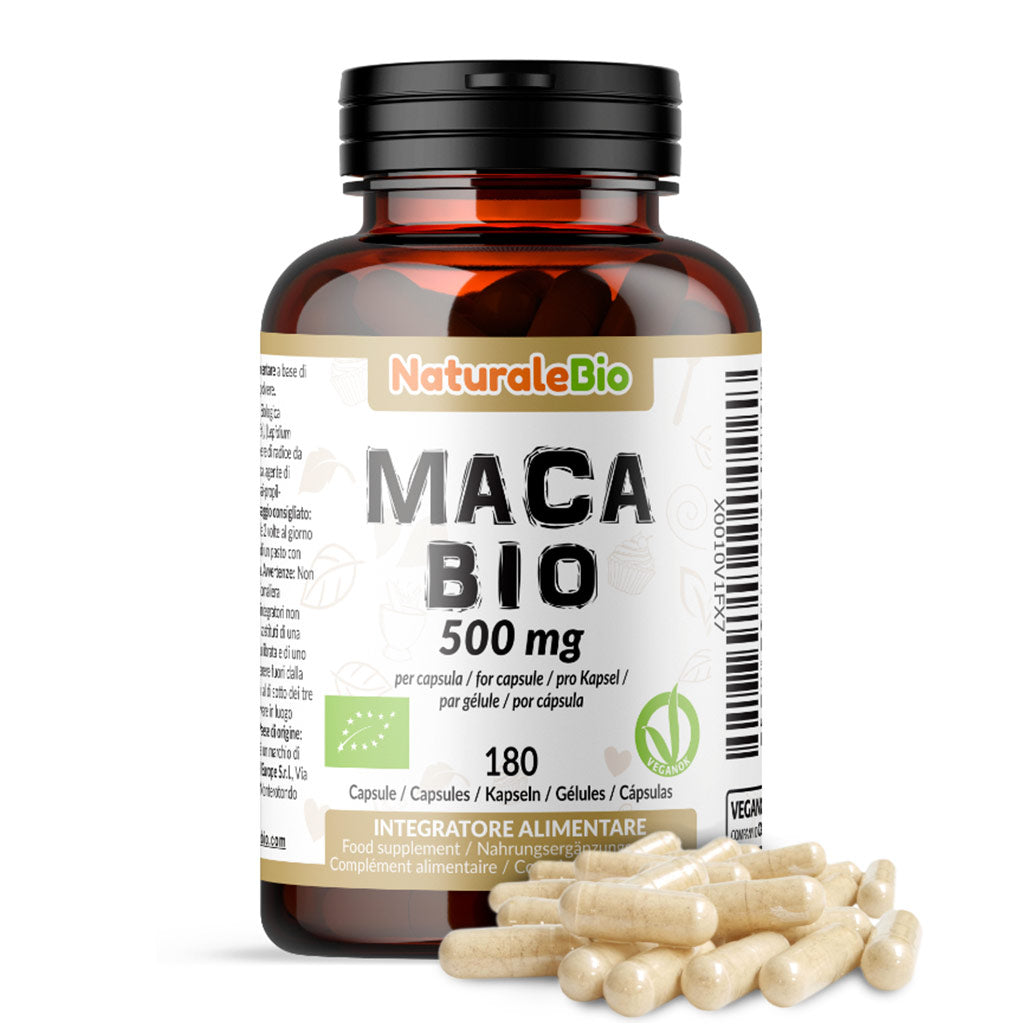
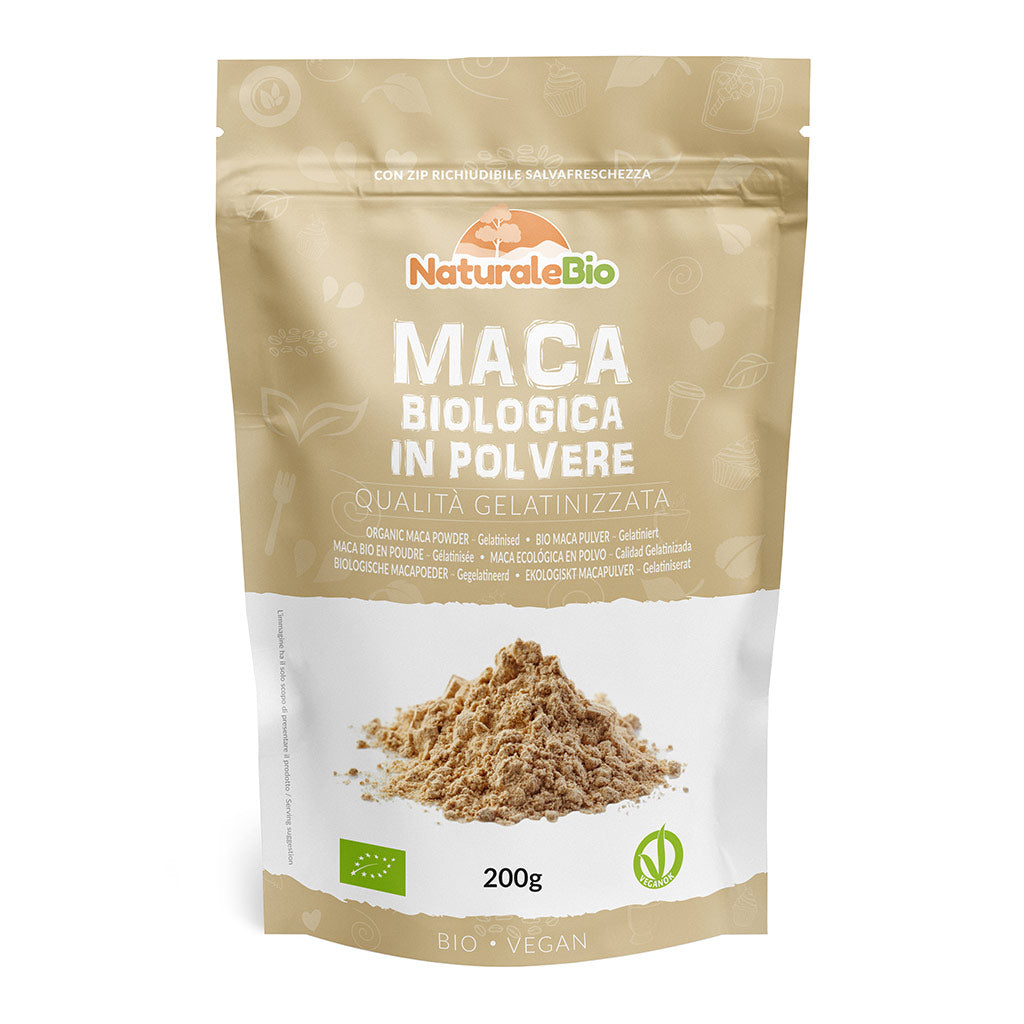
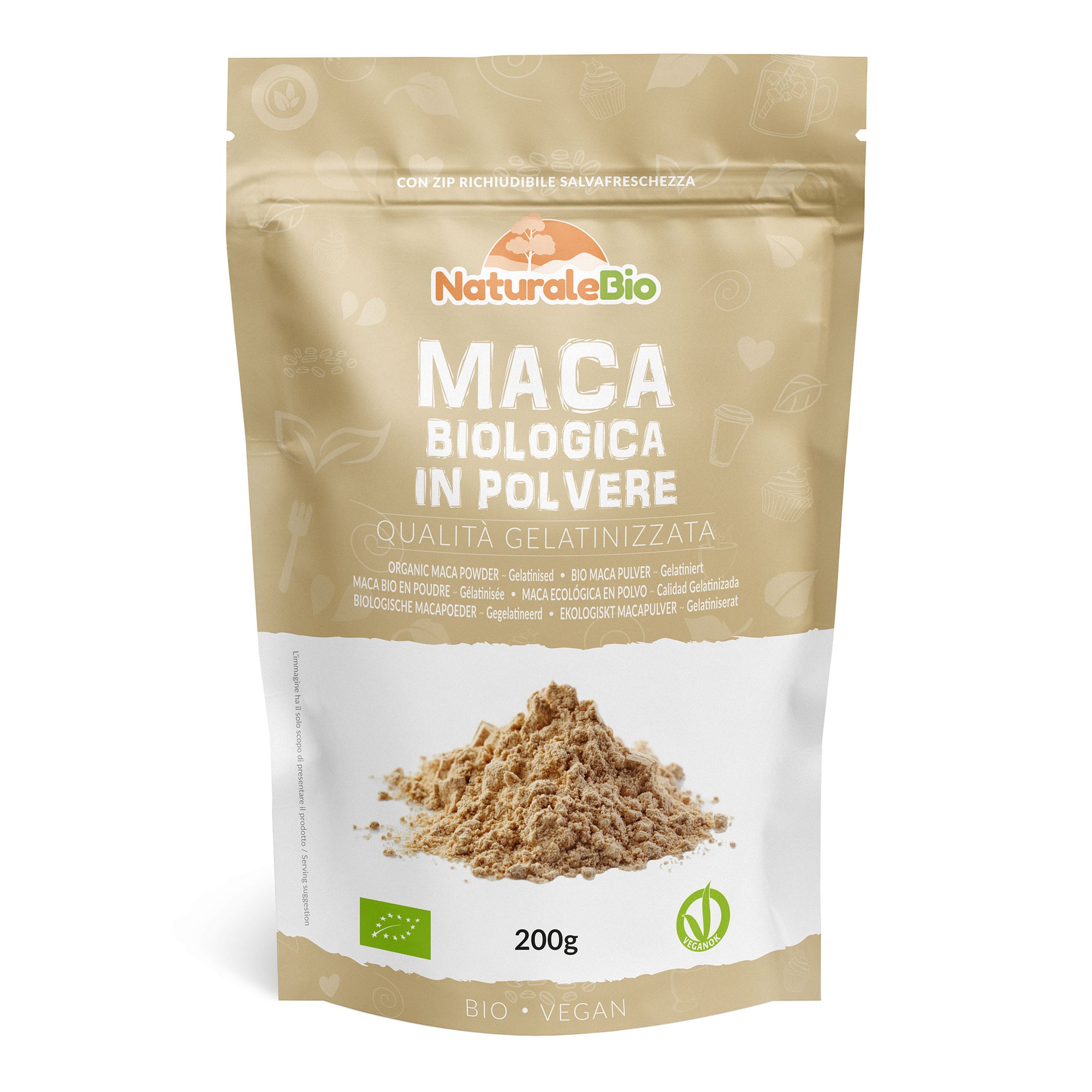
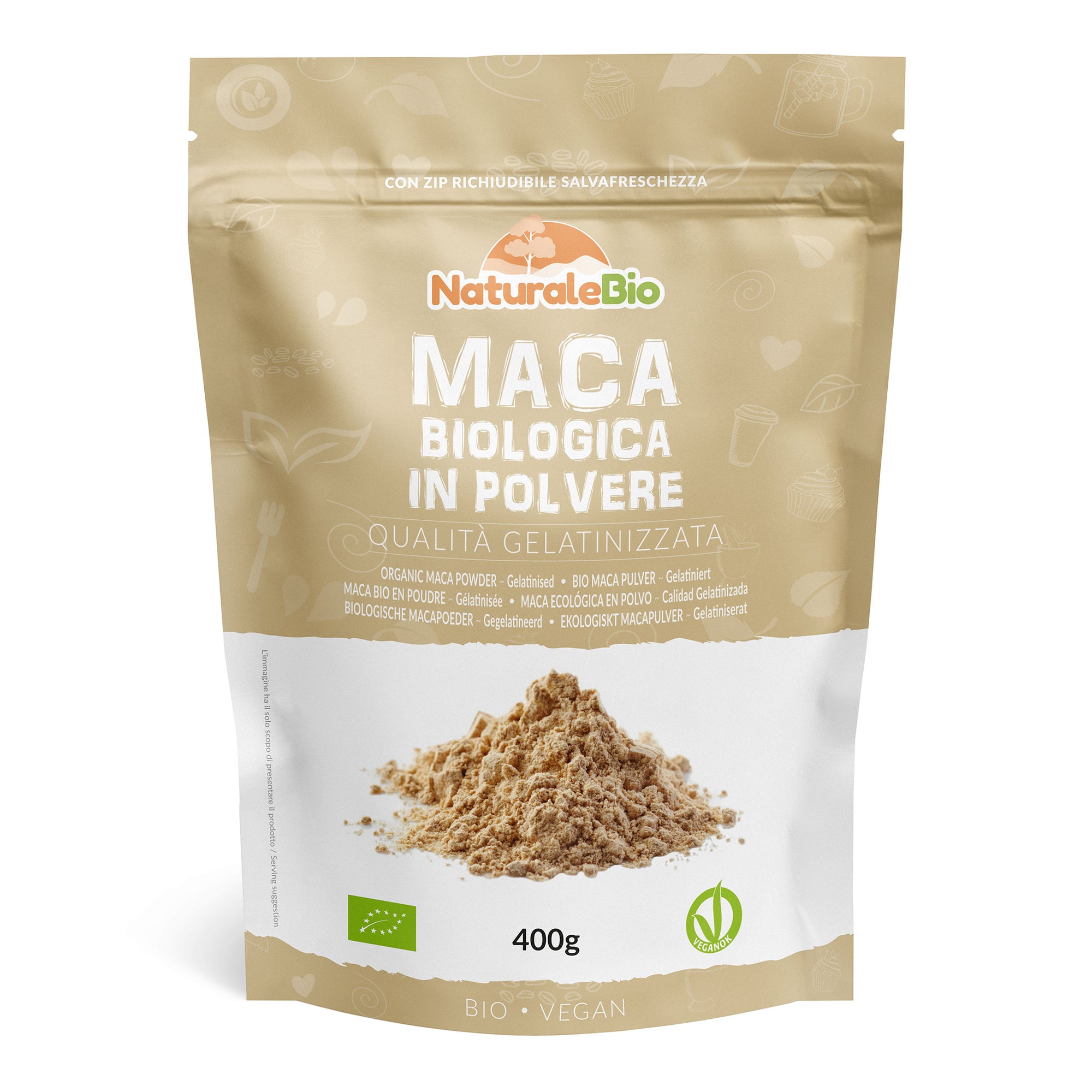
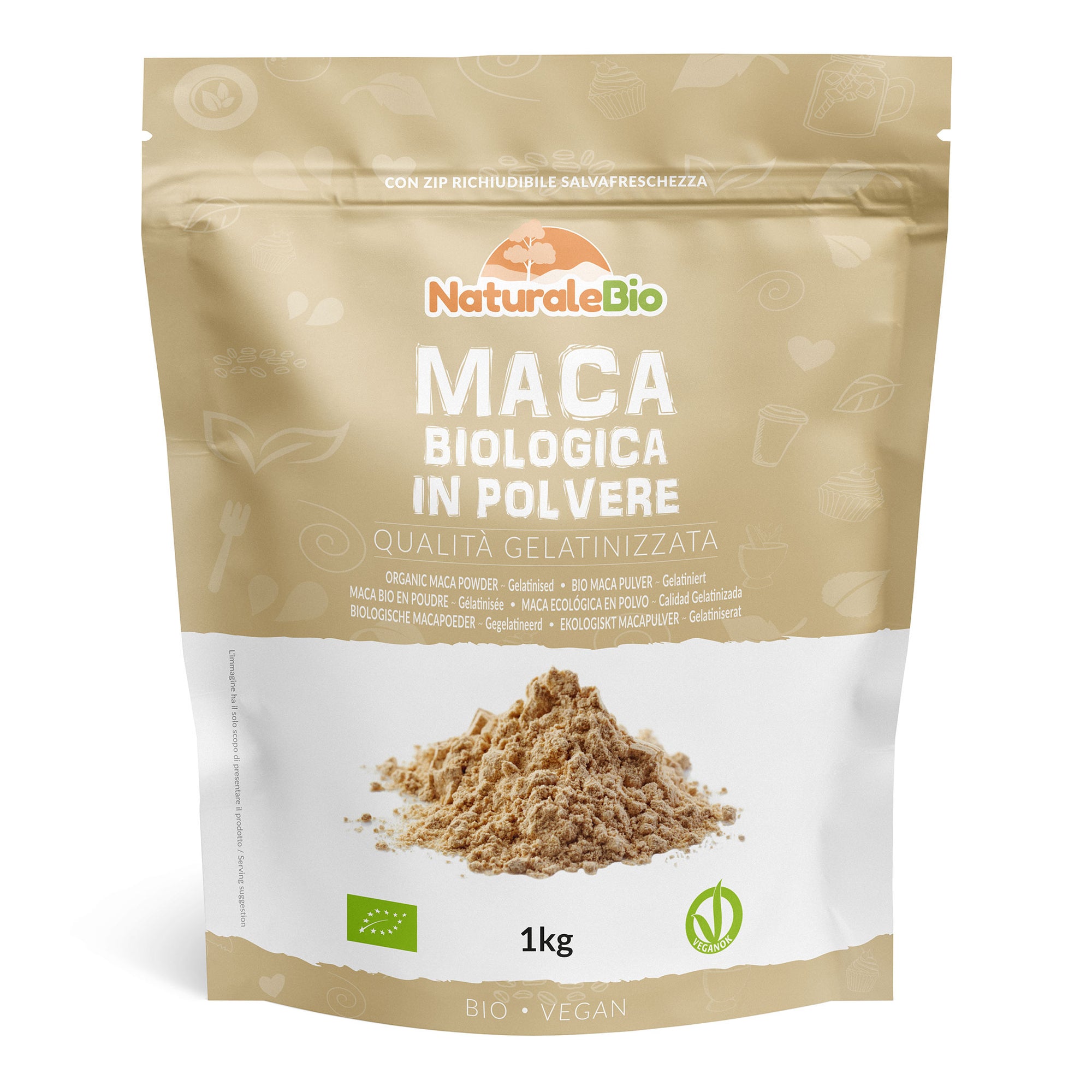
0 comments